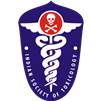Vol.6 Issue No.2 (2010): Journal of Indian Society of Toxicology
Snakebite in South Asia: A Call for Coordinated Action
For the Global Snakebite Initiative
The snake is a vibrant and important symbol in the lives of millions of people throughout South Asia. For Hindus, the benign protection by the many-headed Nãga, Shesha, of Lord Krishna during his birth, and of a tired Lord Vishnu are indelible tales of a long relationship between men and snakes. Buddhists view the snake with similar reverence, and the image of Buddha sitting cross-legged atop the coils of a cobra beneath the shadow cast by the spread hood is universally known. Yet the reality is far from genteel. The Theravada Buddhist story of the demise of Shariputra’s young brother Upasena after the bite of a snake (S.iv.40f) epitomises a cold, harsh reality and reflects the plight of many thousands of men, women and children who fall victim to snakebites right across South Asia every year.1
The Nag Panchami festival on the fifth day of Shravana implores the five Hindu snake deities to protect farmers from snakebite during the harvest season which follows afterward. This call for protection is well warranted, but remains unanswered, since snakebite has long been neglected by governments and public health organisations globally.2 Estimates of current morbidity and mortality are unreliable due to poor reporting systems, and because in many parts of the region, the victims may never actually reach health care.3,4 Often quoted global reviews based on extrapolation of national or regional figures from fragmented local data, give indicative but widely variable rates for envenoming and mortality, due to methodological flaws in their designs.5,6 The more recent of these analyses suggested the annual incidence of envenoming across seven South Asian nations (Afghanistan, Pakistan, India, Nepal, Bhutan, Bangladesh, Sri Lanka) was 9.85-31.68/100,000 with annual mortality of 0.91-2.21/100,000.6 A rigorous randomized national community survey of snakebites in Bangladesh concluded that up to 700,000 people (441.2/100,000) are bitten by snakes, resulting in 6,000 deaths (3.78/100,000) each year.7 Sri Lankan Ministry of Health data shows an average of 36,520 persons (190.4/100,000) per year were hospitalized after snakebites between 2000-2005, with an average of 120.6 deaths (0.63/100,000).8 By comparison however, official figures from India reported an annual average of 84,758 (7.59/100,000) hospital admissions and 1,342 (0.12/100,000) deaths from snakebite between 2004-2009.9 A more reliable estimate may soon become available when new snakebite mortality figures for India, extracted from the Million Deaths Study are published.10
Whatever the actual numbers may be, the reality is that snakebite exacts a heavy toll among the (mostly) rural poor of South Asia, and these are not faceless statistics, they are the fathers, sons, mothers and daughters of real families, in real communities. Young men and children are often the most common victims, but women of childbearing age are also at risk.2 Poverty limits the capacity of many victims to seek effective treatment, and snakebite patients in poor socio-economic environments suffer far more than those in more affluent settings.11 At present, coordinated, well-funded help remains a long way away. Governments, UN agencies, NGO-donors and other organisations all prioritize competing health issues against one another in the battle for finite resources. Snakebite is a neglected tropical disease (NTD), not because it lacks champions, but because their voices are drowned out by other interests. The result is that snakebite does not feature significantly in current national, regional or global health priorities. The WHO’s Global Plan to Combat Neglected Tropical Diseases (2008-2015) contains absolutely no mention of snakebite, and while snakebite was added to the WHO List of NTD’s in 2009, its absence from this plan means that no specific resources have been sought to address it under the current program.12 A sustained effort must be made in South Asia to raise greater awareness of the need for specific action to address snakebite problems. In this region, the quality and potency of antivenoms has been largely unchanged for more than 55 years.13 Poor manufacturing standards persist, and products have minimal efficacy and unacceptably high adverse reaction rates.10,14 This is simply unacceptable, and there is an urgent need for regional partners to come together, perhaps with external collaboration, to develop a robust, potent, high quality Pan-Asian polyvalent antivenom that provides broad coverage against the venoms of the major biting species throughout the region. The WHO has recently published Guidelines for the Production, Regulation and Control of Snake Antivenom Immunoglobulins, and produced a complementary website with a number of resources.15,16 A new antivenom for South Asia that meets these rigorous standards, could fulfil the needs of all governments across the region, and at the same time significantly improve patient outcomes, while substantially reducing treatment costs. Dynamic international partnerships such as the EchiTab Project bringing new antivenoms to West Africa through a partnership between Nigerian, British and Costa Rican organizations prove that innovation in antivenom production is possible, and that it is not very difficult to deliver safe, affordable and effective products.17,18 In South Asia, antivenom producers must embrace the need to redesign, improve, test and scrutinize their products, and the new WHO Guidelines deliver an invaluable resource for meeting this challenge. At the same time, government regulators should make compliance with these Guidelines mandatory, and should themselves look to the Guidelines as a valuable tool for improving their management of antivenom resources, and improving the antivenoms themselves. The medical and toxinology communities can play an important role by lobbying governments, their regulators and the manufacturers themselves to address these fundamental issues.
But antivenoms alone are not the answer to the problems of snakebite, and in some circumstances, such as paralysis caused by Asian kraits (Bungarus spp.), antivenom has a limited role unless early administration can be assured.14 In South Asia, urgent action is needed to develop a range of resources to deal with other fundamental problems. Communities need to be better educated about snakes and snakebite, particularly how to avoid snakebites, how to provide safe, effective first aid, and to improve treatment-seeking behaviours. At the same time, health workers and doctors require practical training in the skills needed to adequately assess, diagnose and treat snakebites. They also require access to a range of basic resources to make effective treatment possible. Local clinicians with expertise in the management of snakebites must be encouraged to be both leaders and teachers. This issue has been significantly aided recently by a WHO SEARO initiative to revise and reprint the Guidelines for the Management of Snakebites, launched at a WHO SEARO Regional Workshop on the subject held in Yangoon, Myanmar in 2009.7,19 Communities and health workers should also be mobilised to measure the true impact of snakebite. Concerted efforts to engage community leaders, industries and other health and development industry partners in well-designed projects to measure incidence, mortality and disability rates are long overdue. But perhaps by far, the most neglected aspect of snakebite in South Asia, is the urgent need to engage with the disability services community to develop strategies and programs that can help rehabilitate those who suffer devastating, life-long disability survivors of snakebite, and help return them to living productive, functional lives.
An international meeting on snakebite hosted by the University of Melbourne in 2008, led to the formation of a Global Snakebite Initiative (GSI), endorsed by The International Society on Toxinology.20 The aim of GSI is to develop a framework for multiple partnerships between a wide range of groups with an interest in addressing the plight of snakebite victims world-wide. Key to this is the commitment of GSI to encouraging, supporting and partnering with regional, national and local groups to bring about sustainable improvements that directly benefit snakebite victims. Later this year, Kolkata, India will be the venue for the 1st National Conference on Animal, Microbial, Plant Toxins & Snakebite Management (AMPTOX 2010). Held on 11-12 December, 2010, AMPTOX will bring together experts from South Asia, and from many nations around the world, and provides a timely opportunity for debate and discussion of many important regional issues. More importantly, it is an opportunity to forge a strong locally led, but internationally supported collaboration to systematically and cooperatively tackle problems through a coordinated program of action under the auspices of the Global Snakebite Initiative. Local leadership and direct community involvement in public health initiatives are pivotal to their success and sustainability, and with the wealth of local expertise present in the region, it would be possible for a South Asian GSI Working Group to take a strong lead in setting the future agenda for improvements in snakebite prevention, treatment and rehabilitation. If such a group were to emerge from the AMPTOX 2010 meeting, it would be well placed to immediately provide the necessary leadership to begin the process of assessing specific issues, identifying other stakeholders, seeking out sympathetic political support, forging partnerships and preparing strategies to drive progress towards tangible results. Why is it needed? The answer is simple. Governments and development partners will not simply wake up one morning and decide to include snakebite in their agendas. If we want them to invest in the issue, it is up to us to lead with a concerted, credible and compelling call to action, and it is those of us living and working in the region who are the best placed to make it happen.



